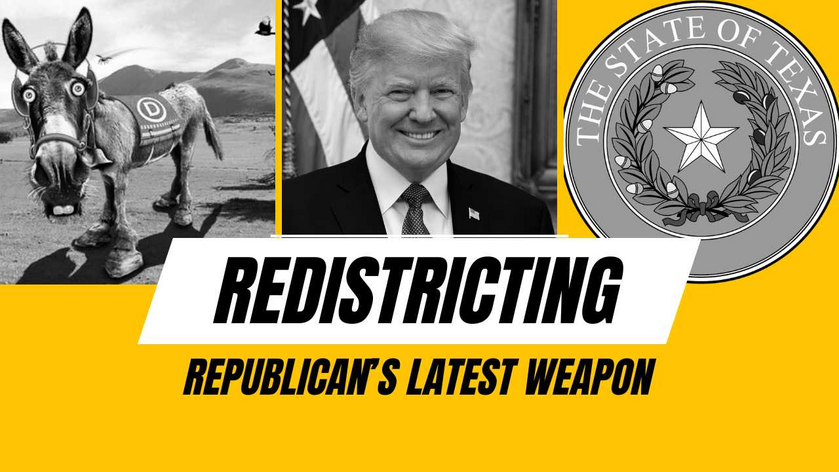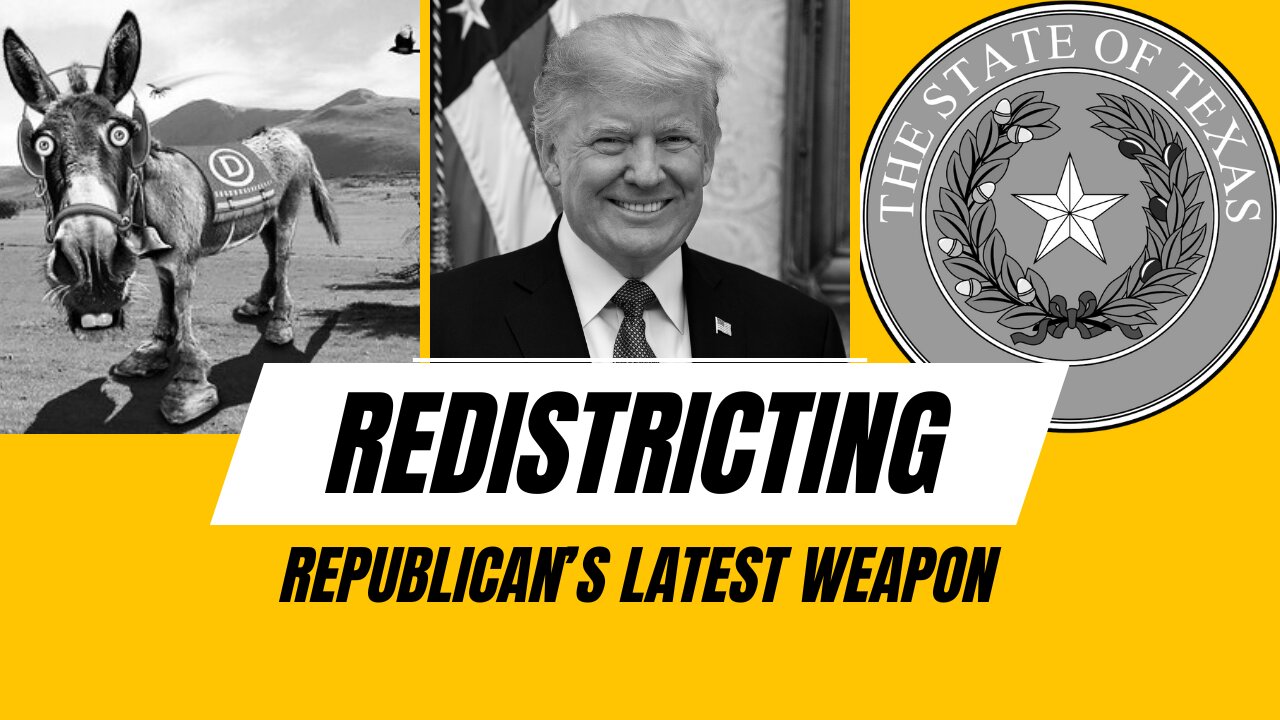Last week, after Trump won his election, a ten-point plan to eliminate the Deep State resurfaced, after twenty months. In short, Donald Trump laid his plans in March of last year – and no one thought anything more about them. Now people are – because now that Trump has won, he could actually carry this plan out. Tonight CNAV evaluates this plan, point by point, with explanations – and advice on whether each point should stay or go.
The original publication of the Deep State Cleanse
Donald Trump first published (and lectured on) his “plan to dismantle the Deep State” on March 21, 2023.

In three and three-quarters minutes, he proposed ten steps he would take upon returning to office:
1. On Day One, re-issue the 2020 executive order restoring the president’s authority to fire rogue bureaucrats.
2. Overhaul federal departments and agencies, firing all of the corrupt actors in our National Security and Intelligence apparatus.
3. Fundamentally reform the FISA courts, ensuring that corruption is rooted out.
4. Establish a Truth and Reconciliation Commission to declassify and publish all documents on Deep State spying, censorship, and abuses of power.
5. Launch a major crackdown on government leakers who collude with the media to create false narratives, pressing criminal charges when appropriate.
6. Make every Inspector General’s Office independent from the departments they oversee, so that they do not become protectors of the deep state.
7. Establish an independent auditing system to continually monitor our intelligence agencies to ensure that they are not spying on our citizens or running disinformation campaigns against the American people (or spying on anyone’s election campaign, as they demonstrably did on Trump in 2016).
8. Continue Trump administration effort to move parts of the federal bureaucracy outside of the Washington Swamp, just like President Trump moved the Bureau of Land Management to Colorado. (Up to 100,000 government positions could be moved out of Washington.)
9. Ban federal bureaucrats from taking jobs at the companies they deal with and regulate, such as Big Pharma.
10. Push for a constitutional amendment to impose term limits on members of Congress.
By now many have forgotten what some of these points address, and/or have second thoughts about other points. But one thing stands out. The Deep State, according to Trump, is a collection of bureaucratic hangers-on and professional spies and “black operatives.” The Deep State might also include certain Members of Congress, especially those who have been in Congress forever. This last points out another sad part: considerable swaths of the electorate sympathize with the Deep State. Or perhaps certain State legislatures have gathered such voters into one place, so they can continue to send these Deep State legislators to Congress.
Accordingly, CNAV will address each point in turn, to describe how it would be effective, and with what side effects. Because side effects will happen, so we must ask ourselves whether those side effects are tolerable. And if they are not tolerable, we must ask what we can and should do instead.
On Schedule F and the Civil Service
Re-issue the 2020 executive order restoring the president’s authority to fire rogue bureaucrats.
This doubtless refers to Schedule F, a new class of employees whose duties have political significance and effect. At present (because President Joe Biden revoked this order), only those executive-branch officers requiring Senate confirmation are political employees. When Senator Orrin Hatch (R-Utah) established the Civil Service, he forbade explicitly political activity by such employees on the job. But the Civil Service is full of employees who discriminate politically against citizens who must deal with their agencies.
Last June, Karine Jean-Pierre received warning to stop using “MAGA Republicans” as an insult phrase – but did not stop. In the most extreme case, supervisor-level employees of the Federal Emergency Management Agency withheld aid from Trump-supporting victims of Hurricanes Helene and Milton. Indeed, whistleblower testimony – and log entries – prove such withholding of aid in Florida after Hurricane Milton. Employees would mark property as inaccessible – or would indicate they were bypassing properties by reason of Trump flags or signs. Whether the employees making these log entries were being brazen, or instead ratting out that supervisor, remains unclear. The supervisor involved, Marn’i Washington, has lost her job – but what of her supervisor? If this is how FEMA runs itself, what of other agencies with rule-making authority? This proves the need for Schedule F.
The Intelligence community – an important Deep State institution
Overhaul federal departments and agencies, firing all of the corrupt actors in our National Security and Intelligence apparatus.
When Trump wrote those words, he likely never dreamed that FEMA would act in so cynical a fashion. (Not to mention counterproductive! When disaster strikes, a dictator usually uses the event to endear himself to people, not punish them.) But he had plenty of experience with the FBI, the CIA, and other three-letter agencies. Today they conform to every trope about evil spies and secret police in Cold War-era and WWII-era movies and plays. Nor is their corruption venal only; much of it is ideological. In his speech Trump spoke of weaponization of these agencies against “conservatives, Christians, [and] the left’s political enemies.”
Fundamentally reform the FISA courts, ensuring that corruption is rooted out.
The Foreign Intelligence Surveillance Act (FISA) provides authority to shadow, wiretap, or otherwise spy on U.S. citizens abroad, whom the government suspects – reasonably or not – of involvement in politically motivated sabotage and murder plots, which people commonly call “terrorism.” The problem is that the retired judges of the Foreign Intelligence Surveillance Courts do not inquire closely enough into the cases the government brings them. Nor, in most cases, do the subjects of their orders even know what’s happening to them. So how can they contest them, and who speaks for them? They can’t, and no one does.
Reform might not serve. Maybe only abolition would serve. Trump has other ways to ensure accountability for foreign governments who sponsor acts of the kind those courts ostensibly exist to stop. In fact his re-election has already prompted the surviving leadership of HAMAS to consider an armistice with Israel.
Exposing the Deep State and preventing its future activities
Establish a Truth and Reconciliation Commission to declassify and publish all documents on Deep State spying, censorship, and abuses of power.
Trump surely chose that phrase deliberately, throwing back at the left the South African Truth and Reconciliation Commission. How some of those people must be cringing! That aside, those documents surely start with the source material for the Twitter Files, and such troves as the:
John F. Kennedy assassination files, and
Client lists of Jeffrey Epstein and Sean “Diddy” Combs.
He might also consider releasing the information that men like Tim (Sound of Freedom) Ballard have gathered.
Launch a major crackdown on government leakers who collude with the media to create false narratives, pressing criminal charges when appropriate.
The lack of a comma in that statement makes the following clause restrictive, describing specific kind of leaker. Trump isn’t talking about an ordinary whistleblower. Rather, he’s targeting those who violate legitimate witness confidences, or spread flat-out lies. Persons guilty of such offenses would rate criminal charges.
Make every Inspector General’s Office independent from the departments they oversee, so that they do not become protectors of the deep state.
The worst problem Inspectors General have is that the departments they oversee, will try to co-opt them. To be trustworthy, Inspectors General must be independent – independently paid, independently supervised, and independently headquartered. This point is not only logical and prudent, but required.
Establish an independent auditing system to continually monitor our intelligence agencies to ensure that they are not spying on our citizens or running disinformation campaigns against the American people.
Or spying on political campaigns, as the Intelligence Community spied on the 2016 Trump campaign. If that sounds self-serving, remember: if it happened to Trump, it could happen to anyone. And there is no excuse for that.
The CIA did start running a disinformation campaign in the Sixties, ostensibly against the Soviet Union. They called it Operation Mockingbird. But the problem with measures against real enemies is that sometimes the apparatus can turn those measures against the people.
Eliminate the concentration of power
Continue Trump administration effort to move parts of the federal bureaucracy outside of the Washington Swamp, just like President Trump moved the Bureau of Land Management to Colorado.
The Washington Metropolitan Area (and television market) has become a Capitol District, like that in the Hunger Games novel arc. Concentrating so many federal employees in one place has three bad effects. First, it turns the capital into a “high society” kind of place, offering the drug of power to its high-living residents. Second, it makes the government that much more vulnerable to espionage, because enemy spies have only one place to look. Third – and worst of all – it sites federal employees in two States, in such a high concentration that it “turns them blue.” Kamala Harris carried Virginia for one reason only: those federal employees live in Arlington, Alexandria, Burke, Falls Church, Leesburg, and similar cities, and Loudoun, Fairfax, Prince William, and similar counties. And they vote Democratic – the Party of government.
Scattering them throughout the land makes good statesman’s sense – like the scattering of the nations from Babel (Genesis 11:1-9). It also is the best solution to preserve a republican government, short of denying federal employees the right to vote.
Ban federal bureaucrats from taking jobs at the companies they deal with and regulate.
Congress should have made that law long ago. Private companies often bind their employees to “covenants not to compete” when hiring them. Such a ban in government makes sense for the same reason. It also stops companies from currying favors that stifle competition – and engaging in Frankensteinian projects. Of course, the real solution to deleterious action by regulated industries is the making of actual laws, publicly debatable.
The one point that cannot work as advertised
Push for a constitutional amendment to impose term limits on members of Congress.
True enough, several Senators and Representatives have not only entrenched themselves, but have become part of the Deep State. Representative – and now Senator-elect – Adam Schiff (D-Calif.) is a booby-prize example, and so is Rep. Eric Swalwell (D-Calif.). But this solution creates two problems of its own. First, it creates Lame Ducks, who have no incentive to behave themselves. Second, it shuts out certain Members who actually do good, both for their constituents and for the country.
In any case, a constitutional amendment would be necessary. The Supreme Court has held that States may not add to the qualifications of a Representative or Senator. U.S. Term Limits v. Thornton, 514 U.S. 779 (1995). Neither may Congress, or either Chamber acting alone, impose additional qualifications. Powell v. McCormack, 395 U.S. 486 (1969). So Congress must propose an amendment, for three-fourths of the States to ratify.
But what to do instead?
The correct sanction against Members who so abuse their Constitutional role, is expulsion. Either chamber of Congress may expel abusive Members without consulting the other or the States, if two-thirds concur. Moreover, the voters themselves may refuse to reelect such abusive members. If voters in one or two States or Districts do not, then the Senate or House delegations of two-thirds of the several States can take care of such a problem. Someday the people might get sufficiently embarrassed – or angry – to act on their own inherent authority.
But a Constitutional amendment might be useful – to repeal Amendment XVII and return the choosing of Senators to State legislatures. As part of that repeal, empowering State legislatures to recall Senators might be in order.
Summary
Last year, Mr. Trump did an excellent job identifying the most serious threats to Americans’ liberties. The only solution to which CNAV objects, is term limits, because if anything they make Members of Congress less accountable. Again, it would take a Constitutional amendment. And if each chamber of Congress mustered that much strength, then each chamber could expel abusive Members immediately.
But every other point addresses directly the source of the power that bureaucratic hangers-on have abused, and continue to abuse. Enacting these points would decentralize government and weaken the Deep State directly. But addressing the tenth point must wait for two-thirds of the American electorate, spread out over two-thirds of the several States, to get angry enough to address it.
Link to:
The article:
https://cnav.news/2024/11/10/foundation/constitution/deep-state-ten-point-cleanse/
Video:

Article and video: the Plan to Dismantle the Deep State:

Ancillary articles:
https://www.cnn.com/2024/11/08/politics/fema-employee-trump-florida-hurricane/index.html
https://cnav.news/2023/07/05/news/entertainment/sound-of-freedom-need-hear/
https://supreme.justia.com/cases/federal/us/514/779/
https://supreme.justia.com/cases/federal/us/395/486/
Declarations of Truth X feed:
Declarations of Truth Locals Community:
https://declarationsoftruth.locals.com/
Conservative News and Views:
Clixnet Media





















